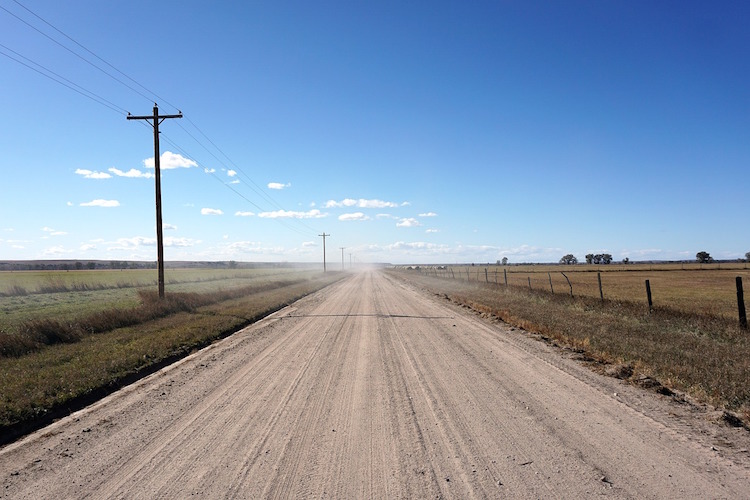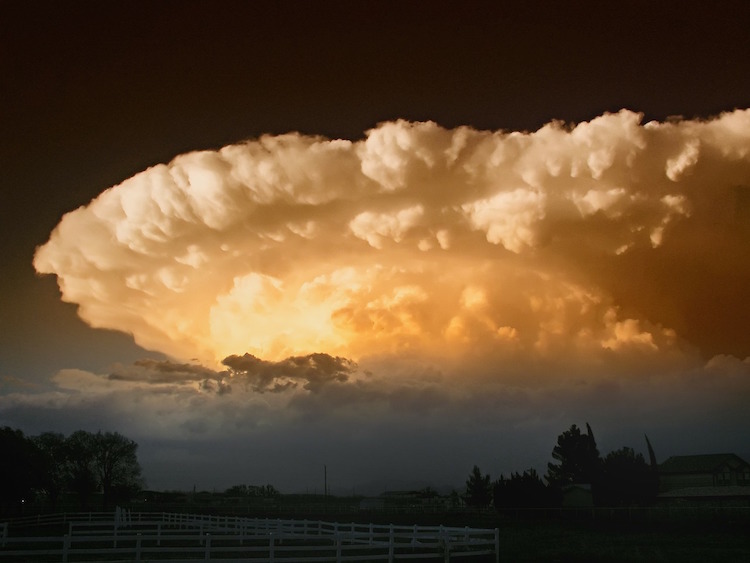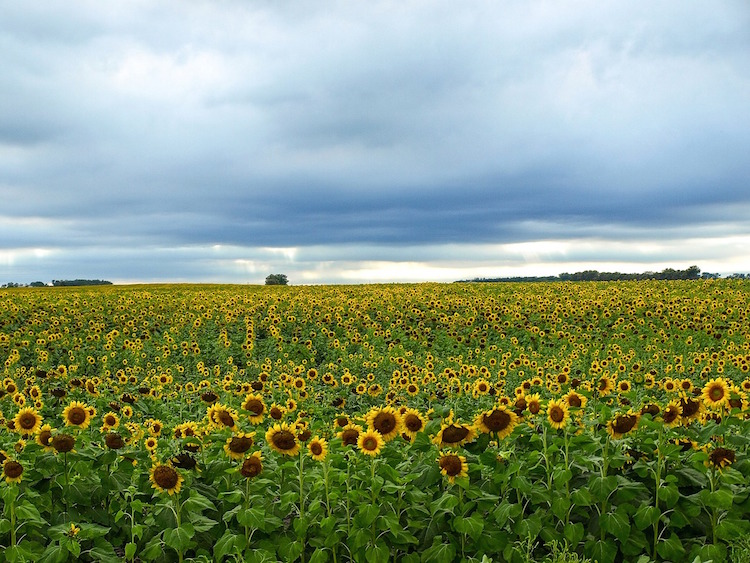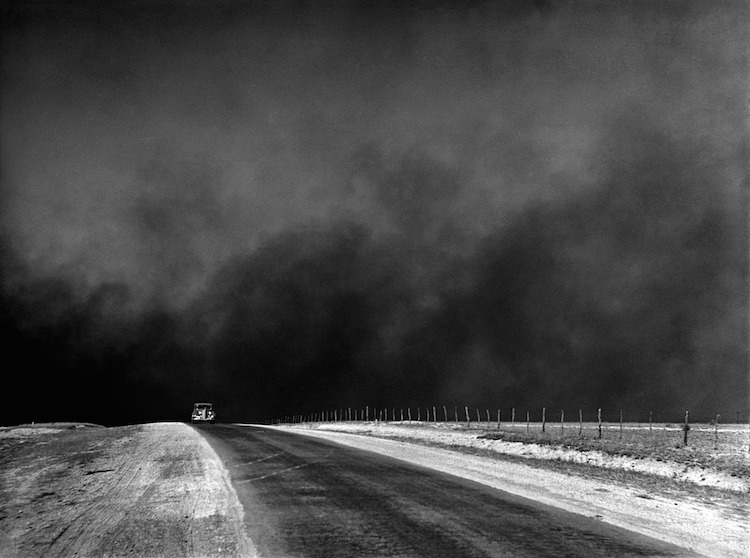This article describes the Great Plains. Lots of Pictures!

Dusty Road in the Great Plains of Nebraska
The Bison: Sounds and Sights of the Great Plains
A drumbeat of hooves is heard from far off in the swaying grasses of the Great Plains. The silhouette of the approaching animal can almost be seen. Is it the hulking shape of a bison? These massive horned herbivores now only rarely occur in the wild due to being hunted nearly to extinction in the 1800s. Perhaps, then, this galloping creature is a pronghorn. These antelope-like grazers can reach speeds of more than fifty miles per hour and are only second to cheetahs as one of the fastest land mammals in the world.

Climate
Pronghorn and bison share their home in the Great Plains with coyotes, prairie dogs, prairie chickens, and black-footed ferrets. This region covers the area between the Interior Lowlands to the east and the Rocky Mountains to the west. Both the plants and the animals here face intense environmental challenges. The Rocky Mountains cast a rain shadow into the region. This phenomenon happens because eastward-blowing winds push clouds full of rain to break on the westward side of the mountains before reaching the Plains. Consequently, the western Plains that are closer to the Rocky Mountains are much drier than the eastern Plains. This region also experiences cold winters, hot summers, and strong winds.

Thunderhead Cloud in the Great Plains of New Mexico
Grass and Soil
The prairie grasses that dominate the Great Plains are resilient to these climatic extremes. These grasses have deep roots that enrich the soil in many ways. First, these roots hold in the soil to prevent erosion. Secondly, as grasses die and replenish, decaying roots fertilize the soil. These fertile soils are attractive agricultural resources for farmers. The most common crops grown in the Great Plains are wheat and other grains. These crops tend to be drought-resistant just like the native grasses of the Plains.

Sunflower Fields in North Dakota
The Effects of Agriculture
Unlike native grasses, however, domestic crop farming can be damaging to the region. In the 1930s, Plains farmers unknowingly caused massive droughts and dust storms by tilling, or breaking up soil, roots, and plant stalks, after the wheat harvest. Without roots to hold the soil in place, the strong prairie winds stripped the fertile soil from the land. This fifteen-year period of agricultural disaster is known as the Dust Bowl. Today, farmers carefully control soil erosion to prevent another disaster from occurring.

The Effects of the Dust Bowl in Northern Texas.
Related activities
Advertisement

